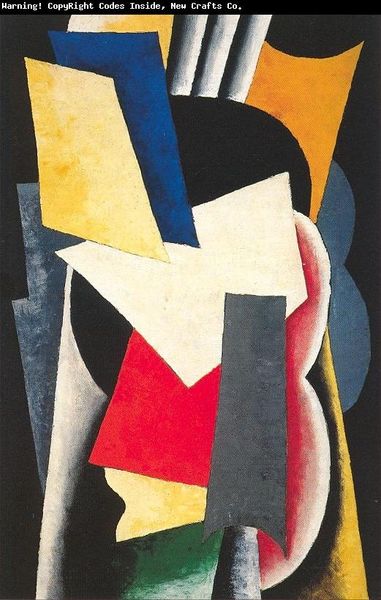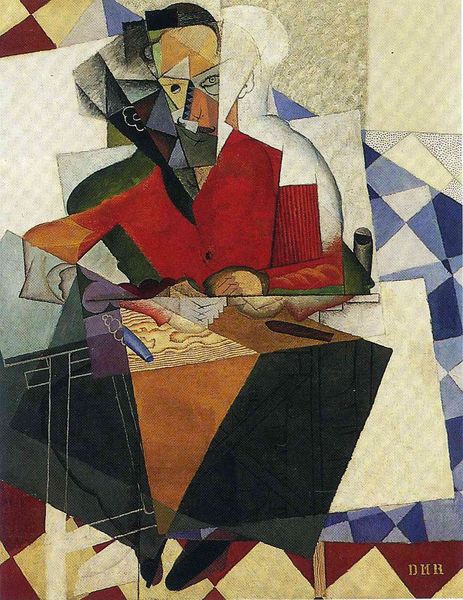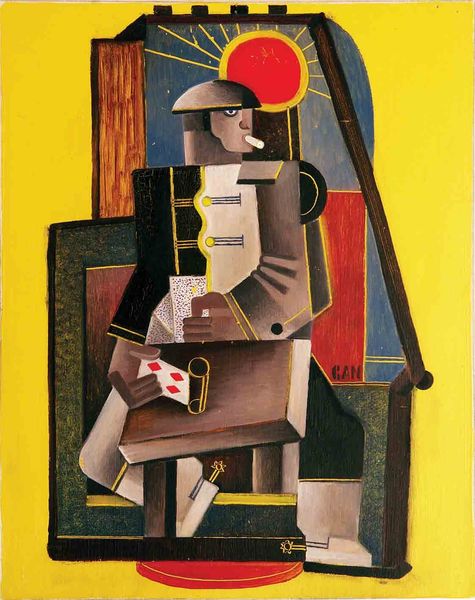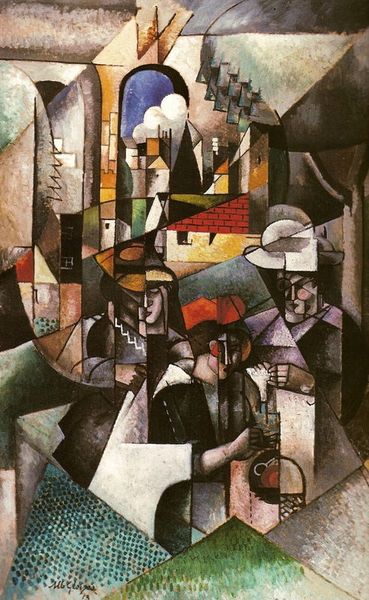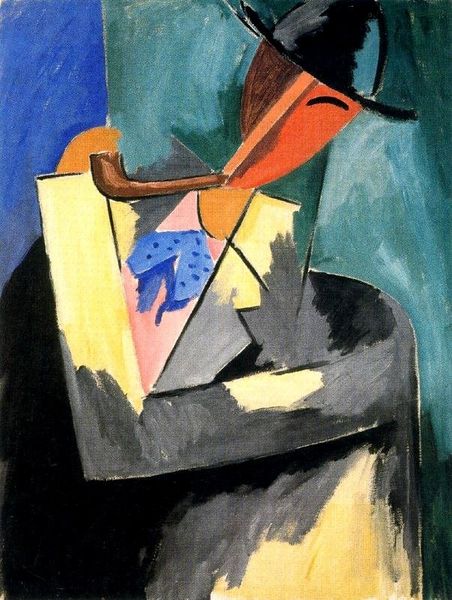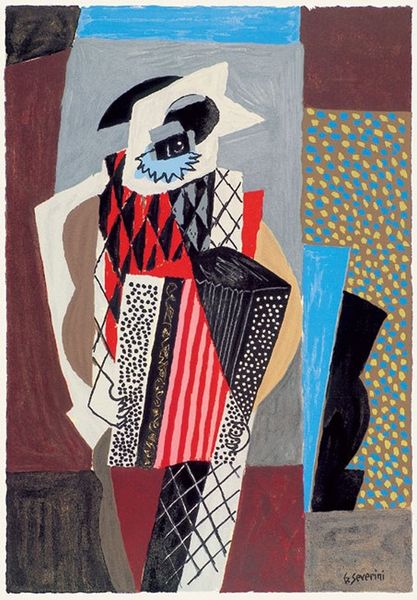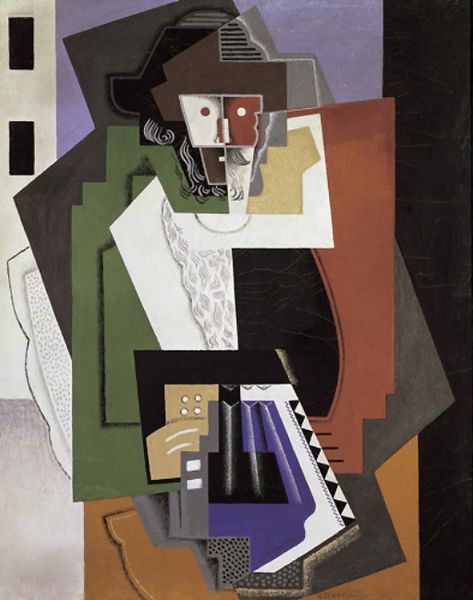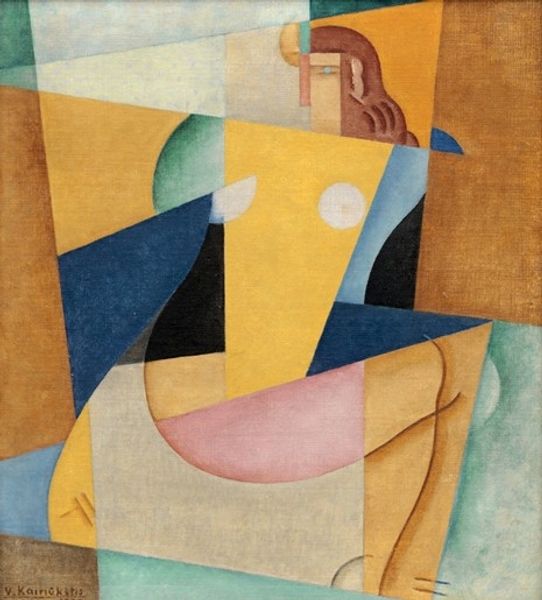
Dimensions: 72.3 x 59.3 cm
Copyright: Public domain US
Curator: Let’s take a look at Diego Rivera’s "Portrait de Martin Luis Guzman" from 1915, executed in oil paint. Editor: Whoa, fragmented! It's like trying to assemble a memory. The subject is there, but scrambled. Moody, almost melancholy, but there's this pop of vibrant color in the lower part that insists on attention. Curator: Indeed. Rivera painted this in Paris during his Cubist period. It’s a powerful representation of Guzmán, who was a prominent Mexican writer and intellectual deeply involved in the revolution. Cubism offered a visual language for conveying the multiple facets of his identity. Editor: Right. The fracturing feels deliberate, doesn’t it? Guzman’s identity pieced together from different angles, the visible and the obscured… it’s as though Rivera is showing us the revolution as it lives within Guzmán himself. What's that vibrant stripe down below? Curator: Precisely. You notice how Rivera employs a fairly subdued palette for the facial features –mostly grays and browns–yet introduces that dynamic striped pattern toward the base? This painting departs slightly from pure analytical cubism through the infusion of emotional elements. Editor: I read it like a sarape, a traditional Mexican blanket. Woven together, a visual representation of Guzmán’s roots, his connection to the people he’s fighting for... A grounding force amidst the chaos of the revolution. Even though the face feels remote, that sarape brings it back home, right? Curator: Absolutely. It's where his personal life is at war with political ideology; how his persona, public and private, can clash given his commitment to revolutionary ideology as opposed to private interests. A truly insightful encapsulation of a conflicted man and the turbulent times in which he lived. Editor: I think the overall effect, though initially jarring, settles into something quite profound. Rivera uses cubism to present a layered, intellectual portrait that still feels deeply human, full of yearning and a sense of duty, even a certain wistfulness. Curator: Yes, seeing art from diverse perspectives enriches our understanding, revealing complex realities about past figures like Guzman or artists like Rivera. The synthesis is what generates discourse and advances our interpretation. Editor: Well, that's just it, isn't it? Great art keeps us questioning and, sometimes, allows us to understand both art and humanity with refreshed perspectives.
Comments
No comments
Be the first to comment and join the conversation on the ultimate creative platform.
